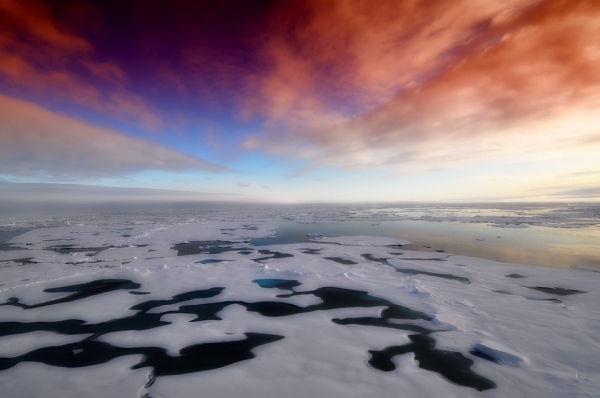High and Low Tide Cause Low and High Methane Fluxes
Methane, a strong greenhouse gas that naturally escapes from the bottom of the North Sea, is affected by the pressure of high or low tide.

Methane, a strong greenhouse gas that naturally escapes from the bottom of the North Sea, is affected by the pressure of high or low tide. Methane emissions from the seafloor can be just easily three times as much or as little, depending on the tide. This is shown by NIOZ oceanographer Tim de Groot, in a publication in Nature Communications Earth and Environment. “Our research shows that you can never rely on one measurement when you want to know how much methane escapes from the seafloor,” De Groot emphasizes.
Swamp Gas at Sea
Methane (CH4) is a particularly strong greenhouse gas. Among other sources, it is produced when plant remains and other organic material in the bottom of a swamp or a canal, but also in the bottom of the North Sea, is broken down by bacteria, in the absence of oxygen. In the case of the North Sea, this involves old layers of organic materials at a depth of up to 600 meters in the seabed, which is converted by bacteria into methane. And like from a muddy canal that you poke into with a stick, that methane can also escape from the sea floor when the pressure gets high enough.
Large Variation
To close the books on all sources and sinks of greenhouse gases, it is important for climate science to know how much methane is coming out of the seafloor and, more importantly, how much of that powerful greenhouse gas reaches the atmosphere. De Groot now cautions against jumping to conclusions in that research. Measurements at a bubbling methane source at a depth of forty meters, near the Dogger Bank which is located roughly between Denmark and Scotland, showed that considerable variations can occur. Not only do methane emissions differ between summer and winter, but high and low tides also appear to have a robust influence: emissions can easily be three times higher or lower depending on the tide. “If you don’t take this effect into account, you will probably over- or underestimate the methane emission from the sea bottom,” says De Groot.
Image: Cold seeps in West-Atlantic Ocean (Credit: NOAA Office of Ocean Exploration via Royal Netherlands Institute for Sea Research)



